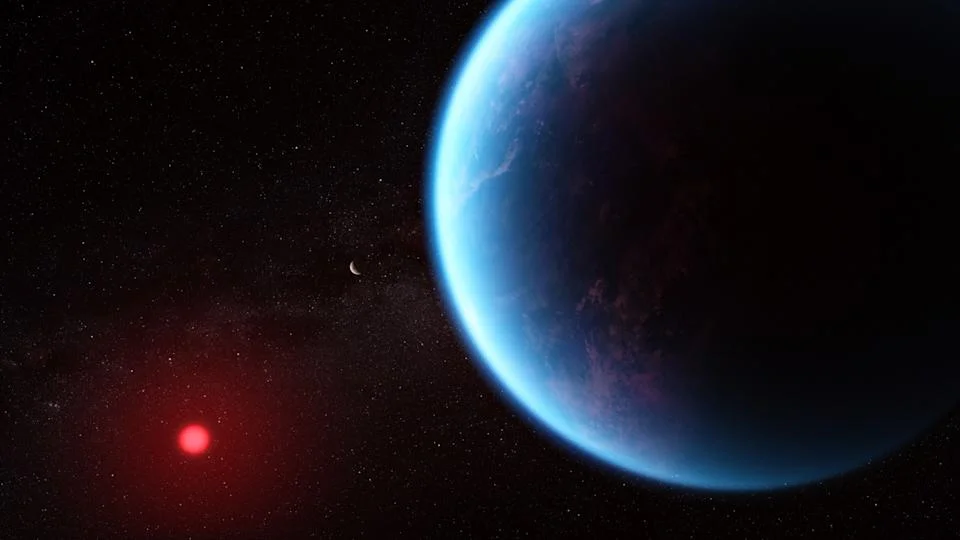
K2-18b Exoplanet: Hopes for Alien Life Dim as New Studies Cast Doubt
The exoplanet K2-18b, located 124 light-years away, has been a subject of intense scientific scrutiny and public fascination due to initial claims of potential signs of life. However, recent independent studies are challenging these findings, suggesting that the original evidence might have been overstated.
In 2023, scientists reported detecting signs of a liquid water ocean and possibly life on K2-18b, stirring excitement about the possibility of a "Hycean world." A tentative detection of dimethyl sulfide (DMS), a molecule produced solely by marine life on Earth, further fueled this speculation. But these results have not gone unchallenged.

A new analysis, detailed in a recent arxiv preprint by Rafael Luque and colleagues, re-examined the validity of the original evidence. The team conducted a joint analysis using data from all three key instruments on the James Webb Space Telescope (JWST): the Near Infrared Imager and Slitless Spectrograph (NIRISS), the Near Infrared Spectrograph (NIRSpec), and the Mid-Infrared Instrument (MIRI). This approach aimed to provide a consistent interpretation of K2-18b's spectrum, which the team felt was lacking in the earlier studies.
"We reanalyzed the same JWST data used in the study published earlier this year, but in combination with other JWST observations of the same planet published two years ago," said Caroline Piaulet-Ghorayeb. The team found that the stronger signal claimed in the initial observations weakened when all data were combined. "We never saw more than insignificant hints of either DMS or DMDS, and even these hints were not present in all data reductions."
The challenge lies in the complexity of exoplanet atmospheres and the limitations of current spectrometers. Distinguishing between molecules that differ by just one atom is extremely difficult, making the detection of biomarkers like DMS highly uncertain. Moreover, molecules like ethane, abundant in exoplanet atmospheres, can have features that fall in similar places to DMS, leading to potential misinterpretations.
Adding to the debate, multiple independent analyses have reached similar conclusions. Luis Welbanks, an astronomer at Arizona State University, noted that the initial claim of life "absolutely vanishes" upon closer inspection. These critics argue that the mid-infrared observations, which initially suggested the presence of DMS, might be misleading due to faint noise masquerading as a real signal.

Another analysis considered 90 different molecules that could plausibly be produced on a planet like K2-18b and determined that the mid-infrared signal might have been produced by any one of 59 of those molecules, including propyne, a gas used in welding.
While the updated research does not definitively rule out the possibility of life on K2-18b, the prevailing scientific consensus is shifting towards skepticism. The initial excitement surrounding the exoplanet has been tempered by the rigorous scrutiny expected in scientific inquiry.
The James Webb Space Telescope is continuing to observe K2-18b, and although these observations may not directly detect life, they may soon reveal more about the planet's atmosphere and interior. The search for extraterrestrial life continues, but for now, K2-18b does not look as promising as once hoped.
What do you think about the search for life beyond Earth? Let us know your thoughts in the comments below.